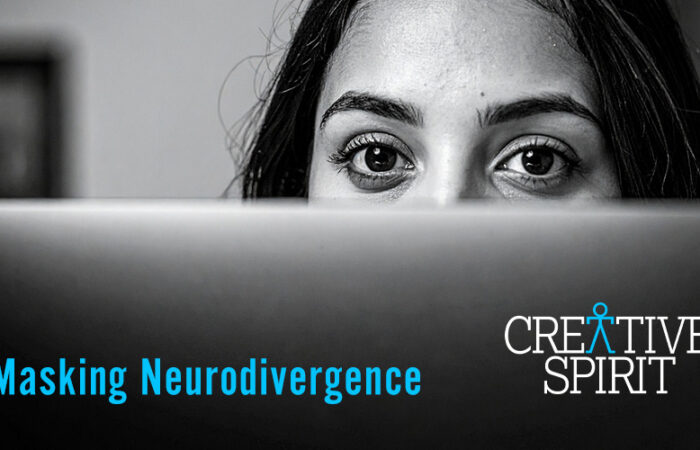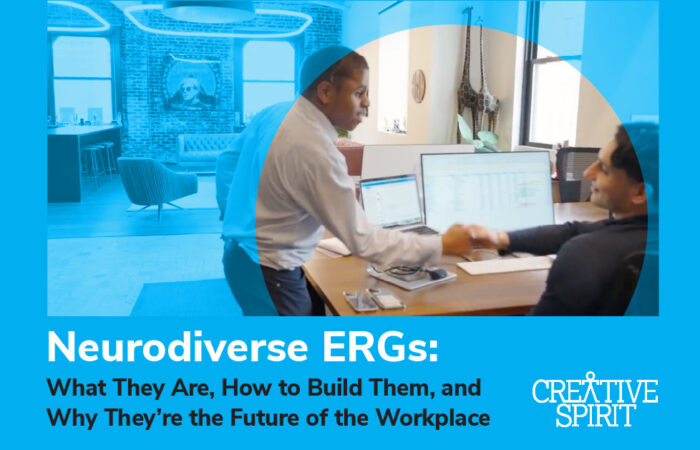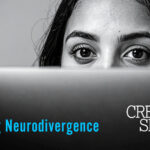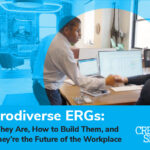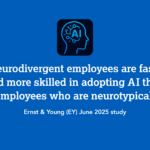By Menachem Rephun, Communications Manager, Creative Spirit
In 2025, the talents of neurodiverse professionals, including innovative thinking, excellent memories, expert attention to detail, and much more, are becoming more fully appreciated by the broader population. Remarkable entrepreneurs like Richard Branson, Charles Schwab, JetBlue founder David Neeleman, and many others have shown how much neurodiverse individuals are capable of achieving. As Dr. Jonathan H. Westover writes in an essay for Human Capital Innovations, “A growing body of research indicates that neurodivergent individuals often possess natural competencies that translate exceptionally well to leadership roles.” On a positive note, the learning platform CYPHER Learning found that 45% of C-Suite Level executives and 32% of senior management identify as neurodivergent. Westover adds that those with autism spectrum disorders “tend to have laser-like focus, see details that others miss, and approach problem-solving in innovative new ways (Happé & Frith, 2020).” Leaders with ADHD, he writes, “tend to be passion-driven, think outside the box, multi-task effectively, and excel in fluid, fast-paced work (Farr, 2016). Dyslexic executives demonstrate strong visualization skills, bring a holistic systems perspective, and excel at managing complexity (Freeman, 2010).”
While this is encouraging, there is still a leadership gap when it comes to neurodiverse professionals in higher-level positions, and many qualified neurodiverse professionals encounter significant barriers to reaching those leadership roles. Creative Spirit is working to make a difference through our Hire Different Training Academy, which works directly with employers to help them become more accessible and inclusive for employees who are neurodivergent, elevating neurodiverse leadership in the process. As the recruitment organization GRG Executive Search writes, “neurodiverse people are more likely to be excluded in the workplace and less likely to be hired, so it’s no surprise that they’re vastly underrepresented within senior leadership.” Supporting neurodiverse leaders depends on more employers recognizing that neurodiverse-led teams are an advantage, rather than a drawback. Creative Spirit is promoting that awareness through our #HireDifferent Academy, which works with companies of all sizes to help them fully include neurodiverse employees. In this essay, we’ll share some strategies and insights that can improve neurodiverse leadership in any organization.
Understanding the Needs of Neurodiverse Employees
To elevate neurodiverse leadership, employers should empathize with and understand the needs of employees who are neurodivergent. Reading the above might make some employers hesitant with thoughts of the expenses and restructuring that it might entail. However, the truth is that training managers to be more empathetic and supportive can be done at low cost, with huge boosts to growth and productivity. In short, business leaders should recognize that supporting neurodiverse leadership and employment ultimately benefits everyone in both the short and long term.
“It’s not about giving neurodivergent leaders special treatment,” Sam O’Donovan and Martha Phillips write in an essay for People Management. “It’s about building an inclusive environment where they can lead effectively. Businesses that can adapt to their leaders’ unique strengths are the ones that thrive. The numbers don’t lie, companies with more diversity are 36 percent more likely to outperform their competitors financially.” They advocate the “empathy first” approach as the key to success.
“This isn’t just a nice-to-have skill, it is critical,” they write. “When managers are trained to understand and appreciate the strengths of neurodivergent team members, we see dramatic improvements in both productivity and innovation.” They cite Deloitte research showing that companies with inclusive cultures are 6 times more likely to be industry leaders. Phillips, who is on the autism spectrum, also shares some of the challenges she’s encountered in the workplace as a neurodiverse professional.
“My early career was daunting,” she writes. “I’d try to keep up in meetings whilst dealing with sensory overload, only to find out later that this experience is typical of autistic females. Managing energy levels can be a challenge, but with some accommodations, it’s possible to thrive and really lean into your strengths. You need to work out what it is you need to work most effectively and find an organisation that appreciates a diverse workforce.”
Phillips and O’Donovan believe that supporting neurodivergent individuals in becoming not only employees but leaders can be transformative for any company. “HR professionals have the tools to reshape workplace practices, ensure inclusivity, and drive the adoption of empathy-led leadership,” they write. “By fostering environments where all employees, including neurodiverse individuals, can succeed, HR can be the catalyst for the next wave of innovation and growth.” To put it more concisely, they note that “The companies leading tomorrow are the ones celebrating neurodiversity today.”
Tailoring Leadership Development Programs to Neurodiverse Leaders
Along with accessibility and understanding, another important strategy to elevate neurodiverse professionals in executive/leadership roles is through leadership development programs. One expert offering insight on neurodiverse leadership is Eleanor Hecks, a business, management, and entrepreneurship writer and editor-in-chief of Designerly Magazine.
“Neurodivergent people can be excellent leaders because they offer unique thought processes that balance their team’s skills,” Hecks writes for TrainingIndustry.com. In her article, she offers 5 tips for training neurodiverse leaders: utilizing different teaching methods, improving communication, understanding neurodiverse employees’ needs, finding unique strengths, and focusing on flexibility. Through alternative teaching methods, companies can accommodate the various learning preferences of people who are neurodivergent. To do this, Hecks recommends talking to employees directly about how they learn best, asking whether they’re facing any challenges with training material, and if so, working together to find solutions, including taking the training home where it might be quieter and easier to focus.
Her second suggestion, improving communication, focuses on speaking directly and in concrete terms, and acknowledging that people have a range of different communication styles. “Companies can adapt to different communication and learning preferences by breaking information into smaller chunks,” Hecks writes, “using varied forms and asking how training is going. Neurodivergent employees may leave more frequently than neurotypical colleagues because they feel misunderstood.” Hecks also recommends embracing the needs of all employees with flexible schedules, remote options, HR support, and places to get away from the noise and commotion of the office.
Appreciating the Uniqueness and Individuality of Neurodiverse People
Along with the above, one of Hecks’ most important suggestions for advancing neurodiverse leadership is encouraging advocacy from peers who are neurotypical.
“One of the best ways to raise up more neurodivergent leaders in your business is to encourage neurotypical people to advocate for them,” she explains. “Train other employees to be more inclusive of all cognitive types to truly change your company’s culture. Neurodivergent leaders can drive a company to new, creative heights. They need a chance to show what a huge value they are to the entire staff.” Advocating for neurodiverse employees and helping them build the confidence to advocate for themselves can be instrumental in developing neurodiverse leadership within an organization.
Hearing Neurodiverse Leaders Share Their Stories
Hearing neurodiverse professionals share their experiences and stories in their own words is crucial in elevating neurodiverse leadership. One of those neurodiverse leaders is Patrick Riccards, CEO of the Driving Force Institute, a nonprofit transforming the teaching and learning of American history. Riccards also has dyslexia, a condition he was not diagnosed with until he was already an adult.
“For the previous 15 years of learning, I assumed that most processed information like I did,” Riccards writes in an essay for Forbes. “Confronting the same struggles and developing the same methods for compensating. Oh, how wrong I was. Today, I am proud to be a neurodivergent leader, a relatively new label in a society so keen on labels.” Like Hecks, Riccards identifies some of the key strengths that define neurodiverse leaders. These include problem solving, not giving up in the face of challenge, willingness to innovate and experiment, and an appreciation for the strength that lies in differences, i.e., different approaches and ways of thinking. “We know we are different and appreciate the differences that others bring to the process,” Riccards writes. “We often seek to assemble those teams of rivals, tapping those with different experiences, different strengths and different approaches to complement what we bring to the process.” Most importantly, Riccards stresses that the time has come for society to appreciate neurodiversity as an advantage, rather than a flaw or a drawback. Changing this mindset is crucial to elevating neurodiverse leadership.
“Sadly, we live and work in societies where we are constantly worried about being branded with labels that would have many people doubt what we are capable of,” he writes. “We look at those on the spectrum and seek ways to exclude them, not understanding how to maximize what they bring to the process. We look at those with ADHD or ADD and see them as disruptive to the process. And we look at those who are dyslexic and see their processing challenges as an indicator of intellectual shortcomings, rather than for the benefits they equip leaders with.” Riccards describes neurodiversity as “a motivator, an inspiration, and a needed chip on one’s shoulder. In many ways, it serves as the very definition of a leader, as such leaders seek to constantly prove themselves, demonstrate their worth and never lose sight of the desired outcome.” When more companies and hiring managers start to embrace this positive outlook, neurodiverse leadership can become not just the exception, but the standard in businesses throughout the U.S. and in other countries as well.
Sources:
GRG Executive Search (2023). Championing Change: Nurturing Neurodiversity In Senior Leadership. https://grgexecsearch.com/insights/championing-change-nurturing-neurodiversity-in-senior-leadership/#:~:text=One%20of%20the%20main%20barriers,excluded%20by%20traditional%20recruitment%20processes
Hecks, E. (2024). 5 Tips for Tailoring Your Leadership Development Programs to Neurodiverse Leaders – Diversity, Equity and Inclusion, Training Industry. https://trainingindustry.com/articles/diversity-equity-and-inclusion/5-tips-for-tailoring-your-leadership-development-programs-to-neurodiverse-leaders/
O’Donovan, S. (2025). How to unlock leadership potential in neurodiverse employees – People Management, Chartered Institute of Personnel and Development. https://www.peoplemanagement.co.uk/article/1901066/unlock-leadership-potential-neurodiverse-employees#:~:text=Taking%20an%20empathy%20first%20approach&text=It%27s%20easy%20to%20see%20why,the%20next%20step%20into%20leadership
Riccards, P. (2024). The Power Of A Neurodiverse Leader – Forbes Nonprofit Council, Forbes. https://www.forbes.com/councils/forbesnonprofitcouncil/2024/05/07/the-power-of-a-neurodiverse-leader/
Westover, J. (2024). Neurodivergent Leadership: An Underutilized Resource – Human Capital Innovations. https://www.innovativehumancapital.com/article/neurodivergent-leadership-an-underutilized-resource

